Community Contribution by Nicho Herrera
The trees along North Royal Poinciana might not seem like much for the average person, but for many they are a door to the Gods. Most have heard of the popular Afro/Cuban religion of Yoruba or Santeria but what it entails is most likely a secret to many. Leaving offerings to the Gods or Orishas as they are known in the religion is commonplace throughout Miami, and different landmarks refer to different Orishas. For instance leaving sacrificed chickens near railway crossings pays respect to those that manage the crossroads (Elegua) or those that command over industry (Ogun). Though I am against the offering of chickens or sacrificial killing (especially wrapped in plastic bags) I find the religion beautiful.

At the Miami River along N. Royal Poinciana we change tides a bit, here offerings are left of 5 sunflowers, some honey, and pumpkins, but for who? The Orisha of the river, love, sensuality, purity and fertility known as Oshun. Oshun is known as the protector and nurturer of humanity and one of the 17 original Orishas sent by the Supreme God Olodumare to protect the Earth. Many practitioners reach out to Oshun when they desire to become pregnant, and one of the more popular rituals is to fill pumpkins with spices and rub them on your belly while invoking the Goddess. Which I found pretty neat and catered to a more personal relationship with the Orisha Oshun as is customary of Yoruba/Santeria. Oshun also enjoys the sunflowers and honey as her favorite color is apparently gold, and what other women wouldn’t enjoy sweets and lovely things?
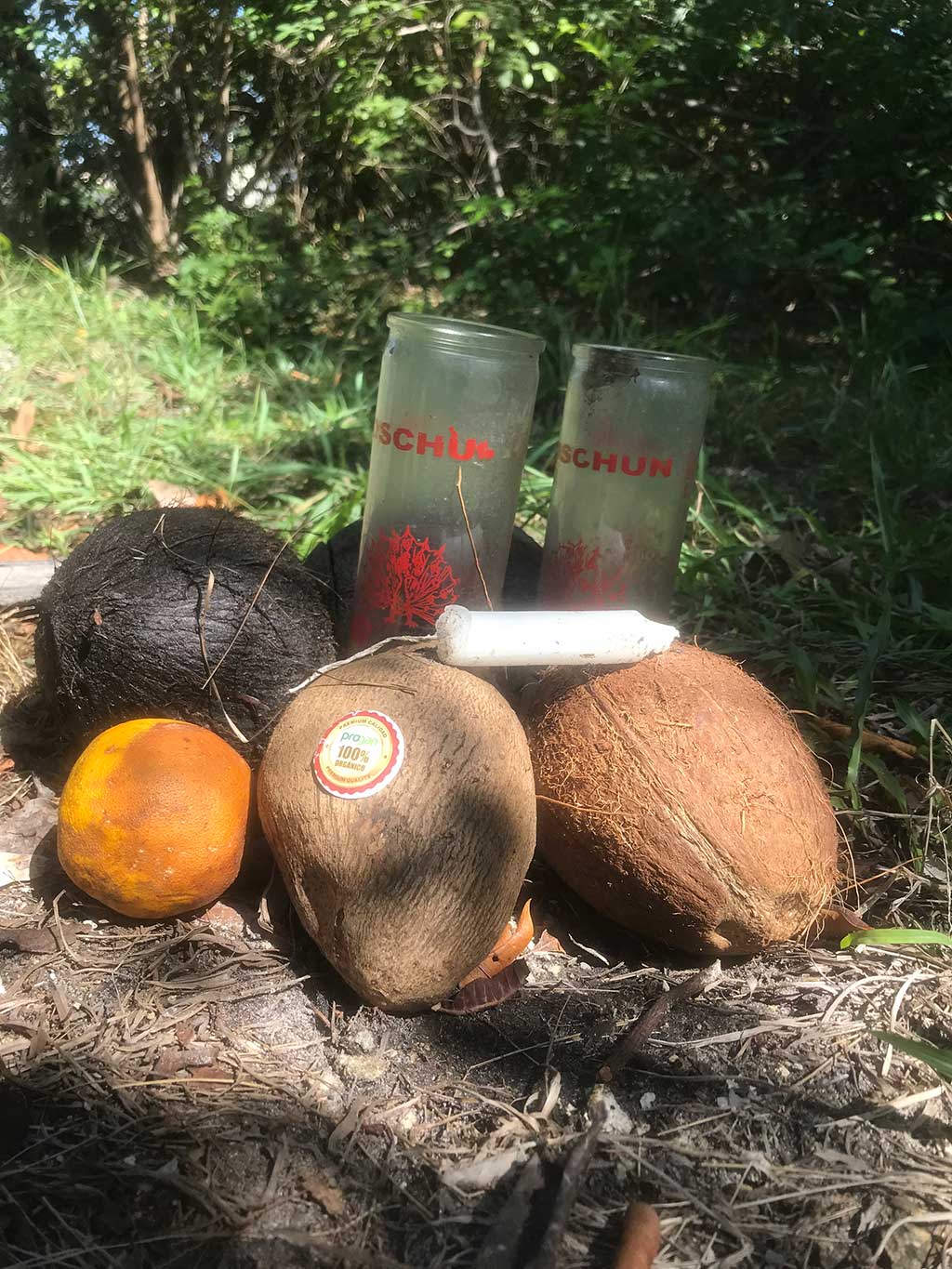
As a concerned citizen I do take a few things into note when I enjoy this natural Miami Springs area, which I frequent on weekends. Foremost was that for a long time the level of trash found along the banks of the river and within the trees. Thankfully we had the Boy Scouts come out in their boats and clean a bit within the last year. I’ve also found it a tranquil hobby to do my own trash picking and have managed to clear about 500 meters of the really deep hard to reach trash within that mini forest. A garbage picker and gloves go a long way!

Another issue there seems to be with the N. Royal Poinciana forest and Miami River that might gain scrutiny is the types of offerings left by the religious patrons. For a religion that focuses on embracing the natural world many temporary offerings that damage the environment can be seen. Styrofoam plates for placing offerings, chickens in plastic bags, water bottles filled with syringes, candles and other religious paraphernalia. It should be that in every instance of society a progressive approach should be taken, and if its understood that some objects damage the environment, they should be strayed away from. It isn’t difficult to leave something beautiful behind that is part of nature and biodegrades at a reasonable rate. Shells, feathers, honey in a glass or clay permanent container, flowers are all good options on their own. I also personally feel that a Goddess of beauty would enjoy the added care to her realm.

Lastly it should be mentioned of a wildlife situation seen occurring along the banks of the river, because of a love of animals and their rights. Recently a few men have been taking pellet guns and killing iguanas here, maybe for food or fun, but still wrong. I am well aware that the Florida Wildlife Commission (FWC) came out with a decree around July of 2019 to eradicate the iguana species in South Florida due to their invasive status. The claims stated don’t seem to always be in the environments best interest and should be made more site specific (ex. Everglades or private property) because some will be quick to jump on those claims and “git ta shootin!”. Now I can’t say I have all the research to back my claims as I’m not a multi person entity with access to extensive materials and vehicles but i will denote what I know. The iguana is one of the few urbanized animals able to control populations of Apple snails, African land snails, rodents, hard to reach river bank weeds, and insects like cockroaches. One of the problems facing this particular area as of recently is the huge influx of the giant snail Pomacea Cannaliculata or Channeled Apple Snail which breeds like crazy and their presence duly noted along canal banks. They can consume huge amounts of aquatic plant life and leave behind a large shell that can reach about 4 inches long, but for a long time the resident iguana population was clearing them out before they got so big, deoxygenating our waterway and clogging it with their shells. You’re obviously allowed to make your opinion on this one, but i personally enjoy the iguana and its exotic presence along usually bland strips of canal. It’s been a Miami Springs cultural symbol since its appearance on our channel 77 public broadcast as one of our mascots.

So as you can see we can find a lot of amazing stories in some of the most insignificant places. Guardianship over our natural resources and the cleanliness of our Earth is a bit of everyones responsibility. Also, finding God in the places God protects and cherishes is one of the best ways to create inner peace. So if you ever have an hour in Miami Springs to pass by and enjoy the Cypresses and Cocoplums or visit the altars and leave a prayer along our stretch of the Miami River, take it. If you feel the urge to help make it better, take it! We can only keep what we can protect.
Nicho Herrera
Community Contributor
(All photos taken in Miami Springs along Miami River)
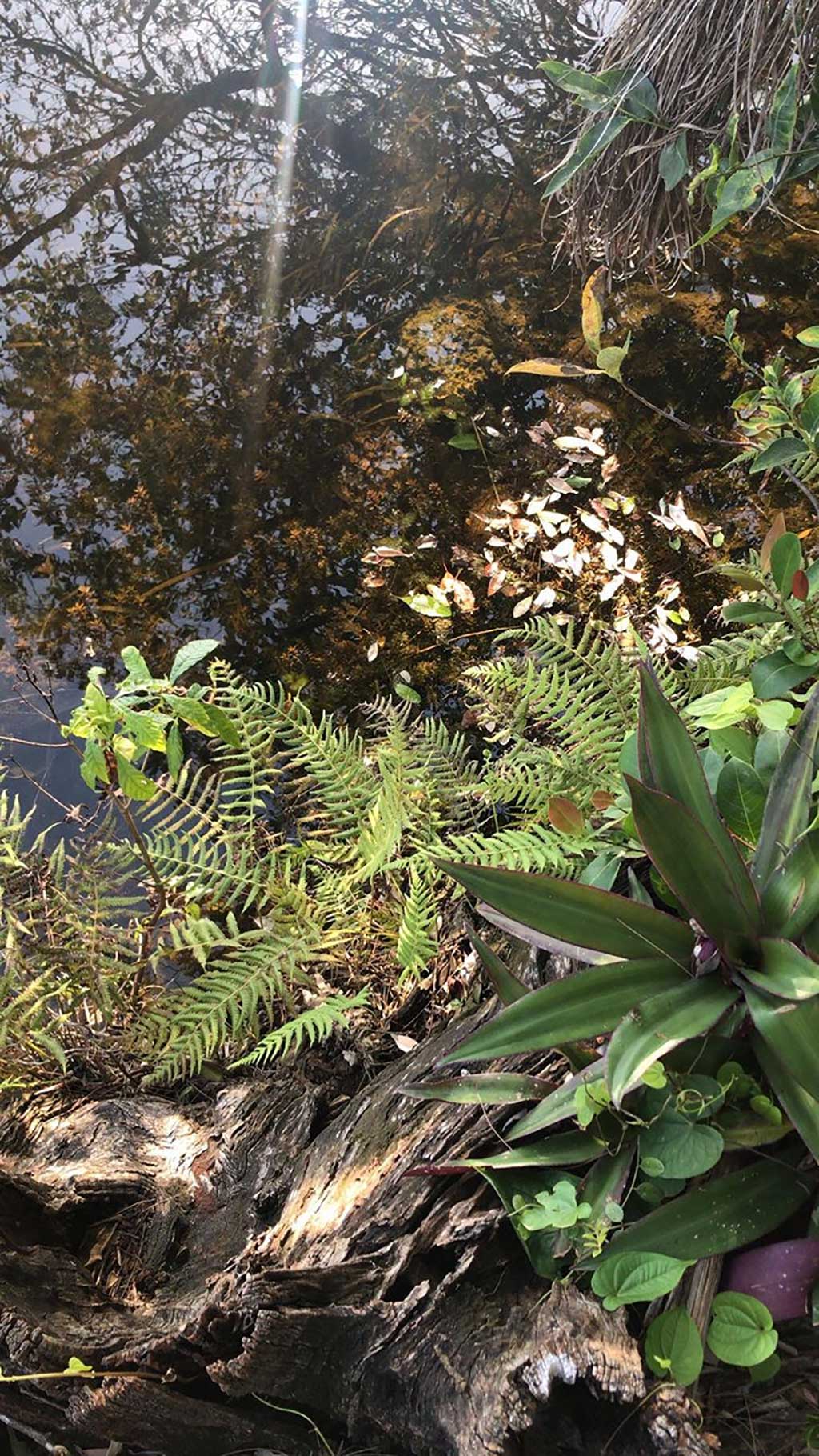

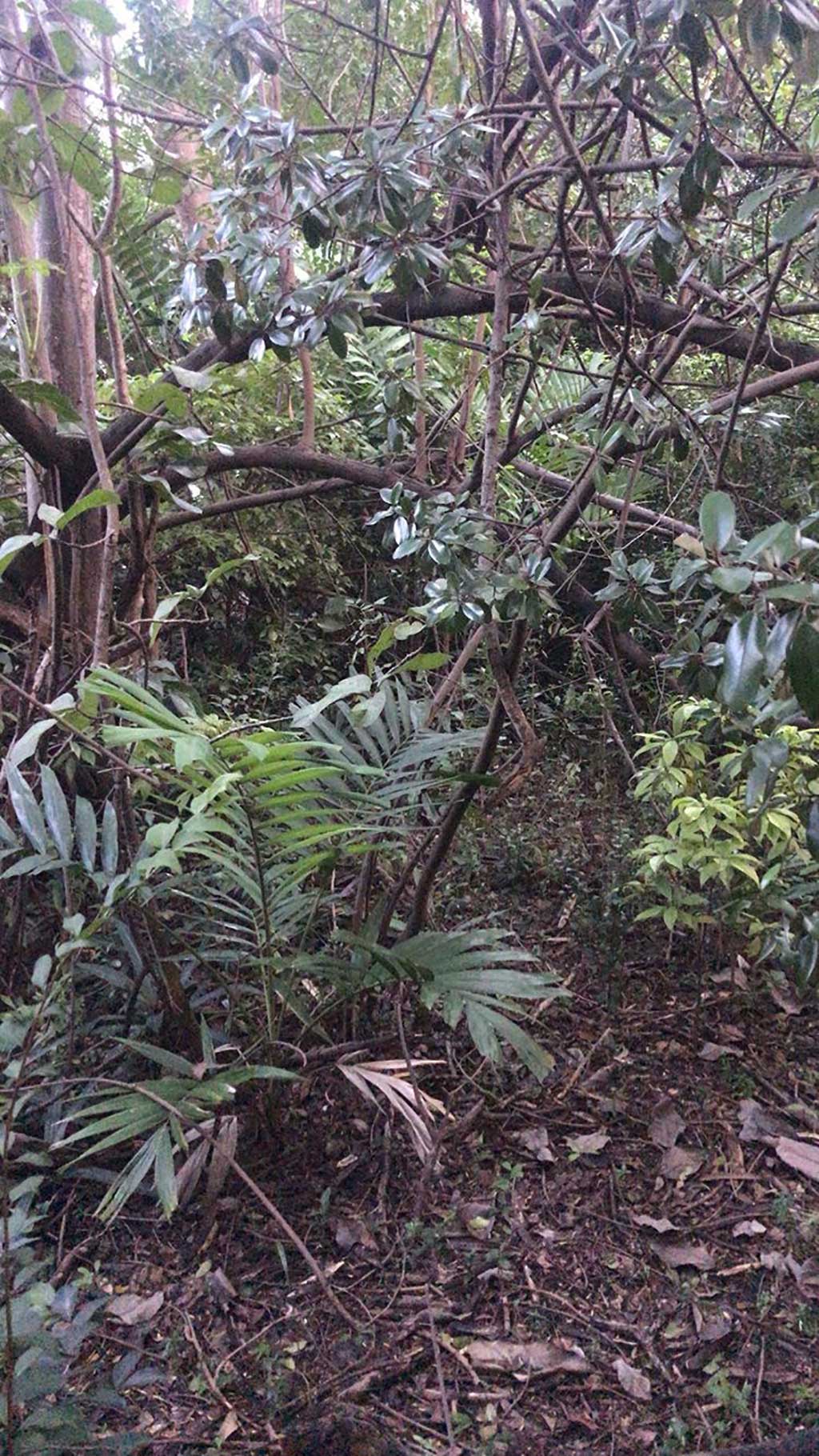
Editor’s Note: This is an amazing photo of a water moccasin aka cotton mouth snake. This is a shy, but very poisonous snake that is common in our area. One of the tell tale signals of a poisonous snake is the width of the rear of the head of the snake, just ahead of the neck. If you see one, never attempt to handle the snake. Instead, just slowly back away from it.

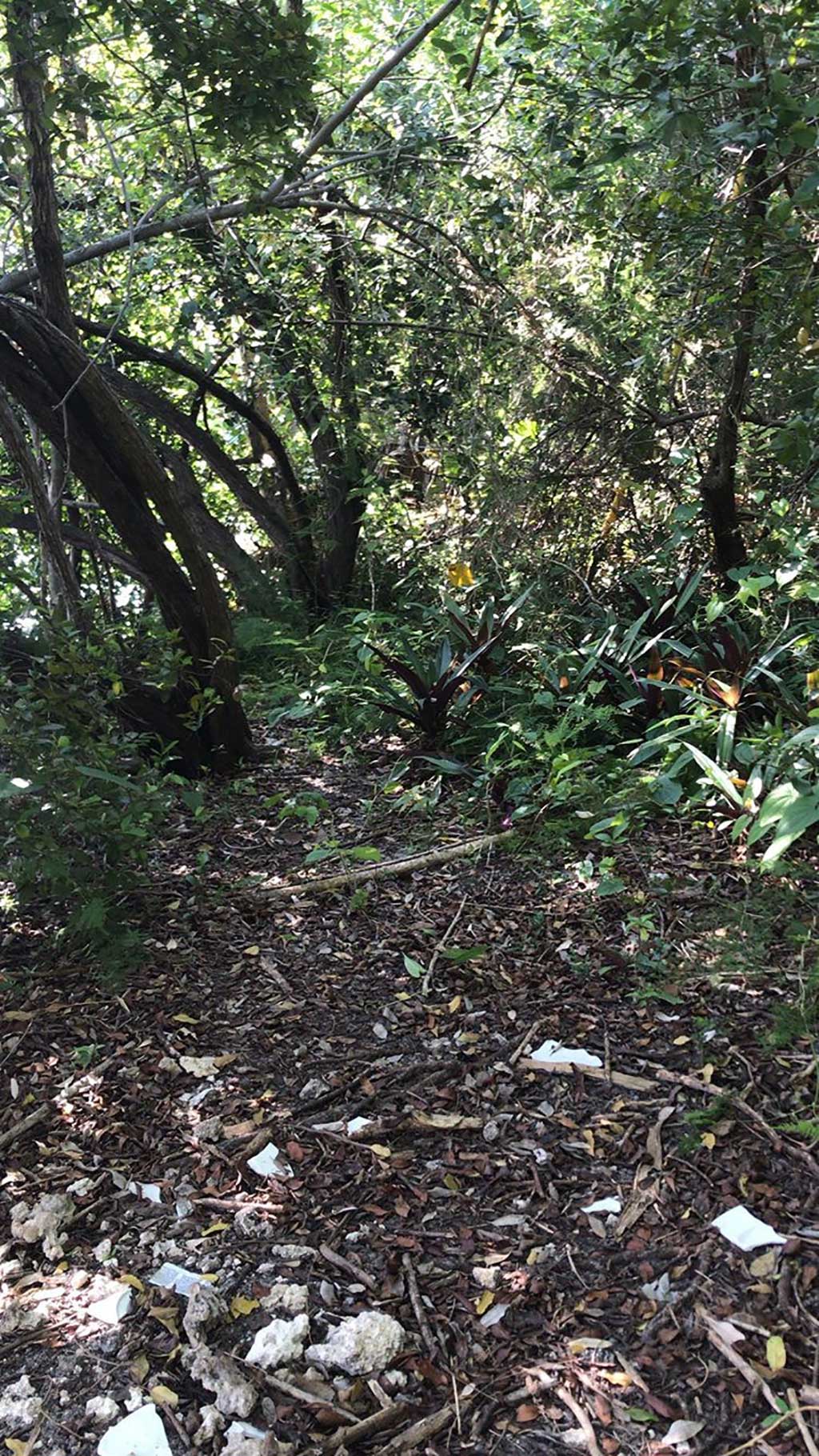
This story was submitted to MiamiSprings.com via community contribution. The Miami Springs community is encouraged to submit essays and discussions that impact the Miami Springs community. If you wish to submit your essay or story, please email it to: story@MiamiSprings.com. Please include the following items:
- Headline
- Full Story
- Story Image or Graphic (Must be original and not copied from a 3rd party)
- Your Name
- Your Email (Kept confidentially)
- Your Phone # (Kept confidentially)
- Your age if you’re not yet an adult

















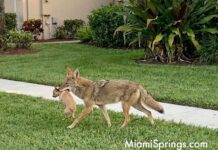





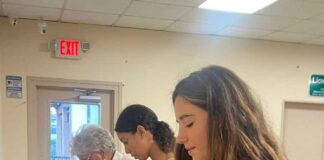
Very enlightening story- truly enjoyed! The pics where beautiful!
The photo of the snake is misidentified. That is a Florida banded water snake. They look similar to Water Moccasins, but the head shape is different. The water snake is a non-venomous snake that primarily eats fish and amphibians. Also, water moccasins are venomous, not poisonous. The shape of a snake’s head is not a good way to tell the difference as all snakes can flatten out their heads to appear larger.